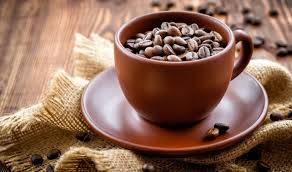High-Fiber Dinners to Lower Blood Pressure
Chopped Power Chicken Salad
Chicken and Cucumber Lettuce Wraps with Peanut Sauce
You don't have to sacrifice good food to control your blood pressure. These dinner recipes are proof. Each dish is high in potassium and low in sodium to promote healthy blood pressure. They're also high in fiber, with at least 6 grams per serving, which may lower your risk of heart disease. With options like Chicken Cucumber Lettuce Wraps with Peanut Sauce and Stuffed Sweet Potatoes with Hummus Dressing, get creative in the kitchen to create a delicious dinner that supports healthy blood pressure.
Vegan Superfood Grain Bowl
Top view of a vegan grain bowl with beets, edamame,
This nutritious grain bowl recipe comes together in 15 minutes using a few pre-made foods like washed baby kale, microwave-safe quinoa, and cooked beets. Packing these in advance means you can have a quick lunch or dinner ready on busy nights. View Recipe
Chicken and Cucumber Lettuce Wraps with Peanut Sauce
We love the crunch of sliced cucumber and jicama on these flavorful chicken lettuce wraps.
Served with a simple peanut sauce, this is an easy dinner to impress kids and adults alike.
Sweet Potato Stuffing with Hummus Dressing
Sweet potato stuffing with hummus dressing, bottom view on plate
Hearty yet easy to make, this stuffed sweet potato with black beans, kale and hummus dressing is a great lunch for one with just five ingredients.
No Cook Black Bean Salad
The dressing for this vegan black bean salad gets its creaminess from avocado puree. Any salad mix will do, but if you want to add some peppery flavor to this hearty salad, try arugula.
Chickpea and Quinoa Cereal Bowl
Chickpea and quinoa cereal bowl in a shallow white bowl, fork to the left
Robbie Lozano
There are seemingly as many variations of grain bowls as there are stars, and you can't go wrong with them. But we like the classic, simple dish with hummus, quinoa, avocado, and lots of veggies.
Lentil Stew with Salsa Verde
This healthy vegetarian recipe is hearty and filling. Don't skip the parsley sauce (salsa verde), which is easy to make and adds a spicy kick that balances the flavor of the lentil stew. French green lentils are preferred for this stew because they don't fall apart when cooked. However, regular brown lentils (available in most supermarkets) can also be used.
Slow Cooker Chicken and White Bean Stew
Top view of a white slow cooker with the Slow Cooker Chicken and White Bean Stew recipe
Photographer: Morgan Hunt Glaze, Prop Stylist: Phoebe Hauser, Food Stylist: Emily Neighbors Hall
This slow cooker chicken recipe is perfect for busy weeknight dinners. Serve this Tuscan-inspired dish with crusty bread and salad.
Potatoes stuffed with salsa
This healthy salmon recipe has everything you need for a complete meal: omega-3 rich salmon, protein-rich quinoa, and plenty of vegetables. This healthy quinoa dinner with maple-lemon dressing also makes a delicious lunch the next day.
roasted vegetables and quinoa
This healthy salmon recipe has everything you need for a complete meal: omega-3 rich salmon, protein-rich quinoa, and plenty of vegetables. This healthy quinoa dinner with maple-lemon dressing also makes a delicious lunch the next day. View Recipe
Black Bean Croquettes with Fresh Salsa
urn staples like canned black beans and frozen corn into flavorful croquettes in minutes. Serve with warm corn tortillas, coleslaw, and lime wedges.
Roasted Pork, Asparagus, and Cherry Tomato Bowl
In this healthy grain bowl recipe, hummus may seem like an unconventional dressing ingredient, but here it's thinned with a little hot water to create a rich, creamy dish.
Bean and Butternut Tacos with Green Salsa
Beans and roasted butternut squash make a great vegetarian taco filling. Use fresh, high-quality chili powder and Mexican oregano for best flavor. Look for both at Latin American markets or in the spice section of a well-stocked health food store.
Spaghetti Squash with Tomato Basil Sauce
Substituting pasta for spaghetti squash is a great way to cut carbs and calories in this flavorful vegan dinner. Here we pair the squash with a simple fresh tomato sauce. If desired, spice up the sauce with crushed red pepper flakes, Kalamata olives, and/or capers.
Pan-seared steak with crispy herbs and endive
This easy dinner takes just 20 minutes to prepare, making it a great weeknight meal. Cooking the herbs in the skillet with the steak allows their flavor to infuse the meat and create a crunchy garnish. After the steak and herbs are pan-seared, the endive salad is also cooked in the same pan, making this a healthy dinner with minimal cleanup. READ MORE





























